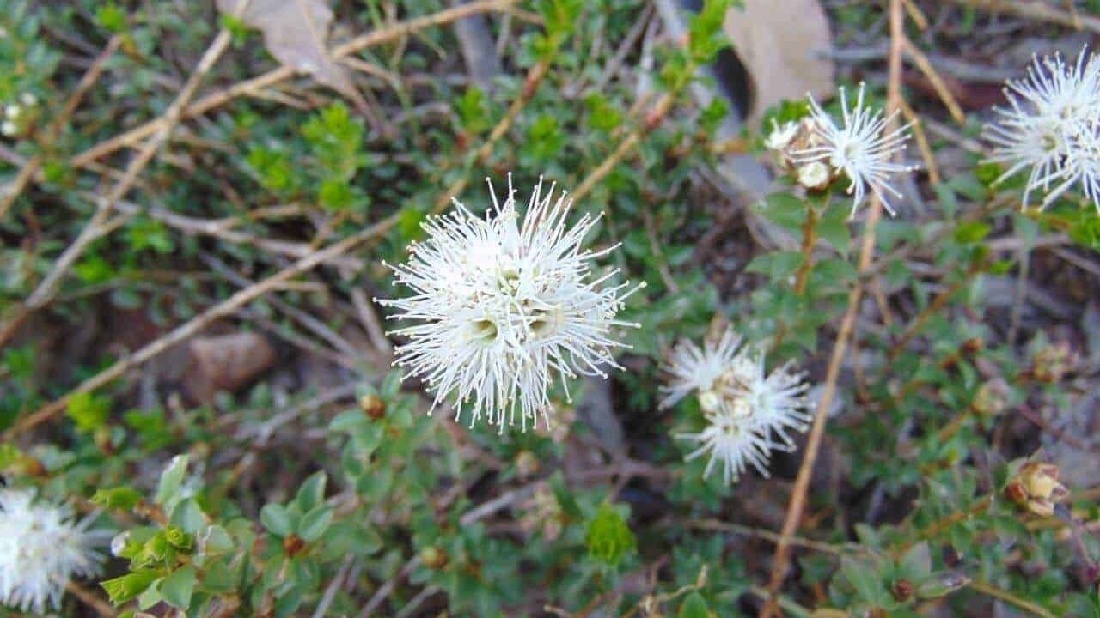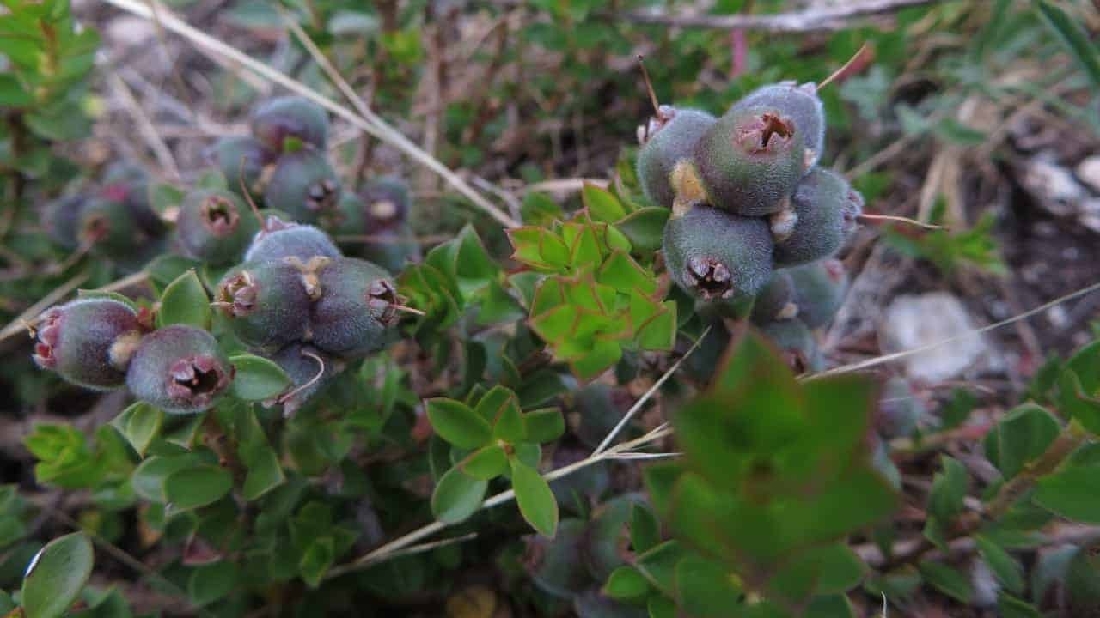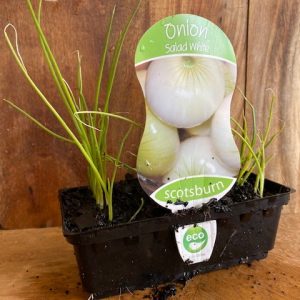Muntries (aka. emu apples, muntaberry, monterry) were one of the first species of Australian native plants introduced in England. For the Ngarrindjeri people of the Coorong (southeast SA), they-re an old favourite in the historical diet, and were often traded with other tribes. You-ll find these low-growing plants most commonly along the southern coast of Australia.
This woody plant bears clusters of green berries that turn purplish/red and fragrant as they ripen. Berries are about 1cm in diameter and crunchy in texture with the flavour of a spicy apple. Perfect for eating raw in salads and cheese platters, or cooked in jams, pies, muffins, puddings or with meats. They contain up to four times more antioxidants than blueberries.
Small white flowers (resembling gum blossom) will appear in the Spring. Little maintenance is required to get this plant going, but for best results, keep the soil moist throughout the flowering and fruiting season and avoid disturbing the roots. For an easier harvest, you might want to grow your muntrie upright on a low trellis.
Muntrie is a dense groundcovering plant that handles full sun or dappled shade, as well as sandy soil and some salinity. As a ground cover, it can be used as an effective weed-suppressing species in a garden bed. Leaves are petite and bright green, and grow along upright stalks.
At just under half a metre in height, the Muntrie works in pots, planter boxes and garden beds, filling up gaps, awkward corners and sandy narrow beds.
Aboriginal name(s):
Ngurp (Bunganditi, VIC & SA)
info couresy of Tuckbush.com.au
Additional information
| Weight | 3 kg |
|---|---|
| Dimensions | 25 × 25 × 50 cm |





